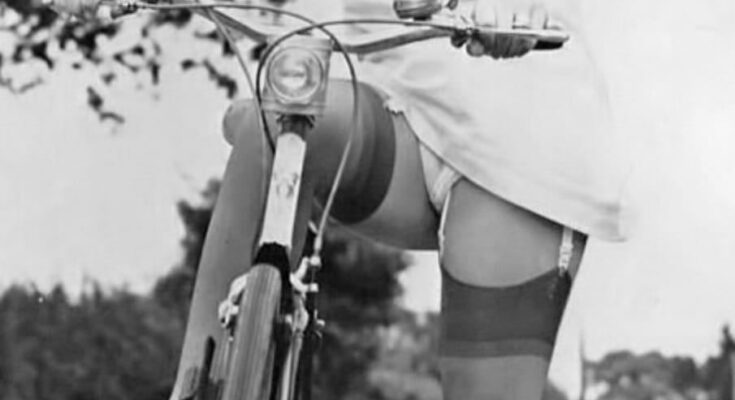She stood before the camera with a confidence that was almost rebellious — not loud, not defiant, but quietly self-assured. A single glance, a soft curl of hair, and the flash of a knowing smile were enough to make post-war England blush. The woman was Nicola Taylor, and for a few shining years in the early 1960s, she became the face — and mystery — of a generation that was learning how to breathe again.
The Britain of her time was still balancing between old-world restraint and the whispers of liberation. Elvis had crossed the Atlantic, skirts were creeping upward, and London was about to swing. But long before “The Sixties” became a cultural headline, Nicola Taylor was already challenging the edges of propriety from the glossy pages of a small English fetish magazine called Spic & Span.
To modern eyes, her photographs look almost innocent — a flash of stocking, a teasing pose, the faint outline of lace. But in the early 1960s, those images carried shockwaves. England was still a place where showing too much could end a career, and where the idea of a woman controlling her own image — her own sexuality — was radical in itself.
Nicola Taylor didn’t just model; she curated an atmosphere. Her expressions were never vacant. They were deliberate, full of wit and mischief. “She could make a stocking top feel like poetry,” one photographer later said. “It wasn’t about skin — it was about story.”

Spic & Span was no ordinary magazine. Published quietly, sold discreetly, it catered to a curious class of readers seeking sophistication rather than scandal. Within its pages, Nicola’s portraits stood out. She wasn’t vulgar, and she wasn’t passive. There was grace in her stillness and rebellion in her restraint. The camera adored her because she gave it more than beauty — she gave it conversation.
To the audiences of her time, she represented both temptation and transformation. Britain was inching toward freedom — the pill, the mini-skirt, the Beatles — but women like Nicola were the unspoken vanguard. Through subtlety and suggestion, she gave a generation permission to look, to imagine, and to question what “respectable” really meant.
Behind the lens, however, Nicola remained grounded. She was known for her humor, her intelligence, and her fierce independence. She often arrived at shoots with her own wardrobe pieces — lace gloves, silk stockings, even props she thought might tell a story. Off-set, she was said to be reserved, fond of books and black tea. There were no scandals, no headlines — only a quiet determination to control her art in a world that too often tried to define women for them.
By the late 1960s, the world around her changed. The industry grew bolder, bras burned, and the line between art and exploitation blurred. Nicola Taylor, true to her own sense of class, chose to step away rather than follow the rush toward explicitness. “Mystery was everything,” she reportedly told a colleague. “Once you lose that, the game is over.”

And so, she faded from print — gracefully, almost as if she’d never been there. For years, her name lingered only in collectors’ circles and among admirers of mid-century photography. But as nostalgia for the 1960s returned, so did interest in the women who shaped its subtle rebellion. In that rediscovery, Nicola Taylor’s images began to resurface — hauntingly elegant, untouched by time.
Today, her legacy isn’t one of scandal but of style. She reminds us of an era when suggestion was art, when allure came not from exposure but from confidence. Her photographs capture something rare — the exact moment before society lets go of its restraint, when possibility hums beneath the surface.
Nicola Taylor remains a paradox — both revealed and concealed, both of her time and far ahead of it. The woman who once dared to wink at a cautious world left behind more than photographs; she left behind an attitude, a whisper that says:



